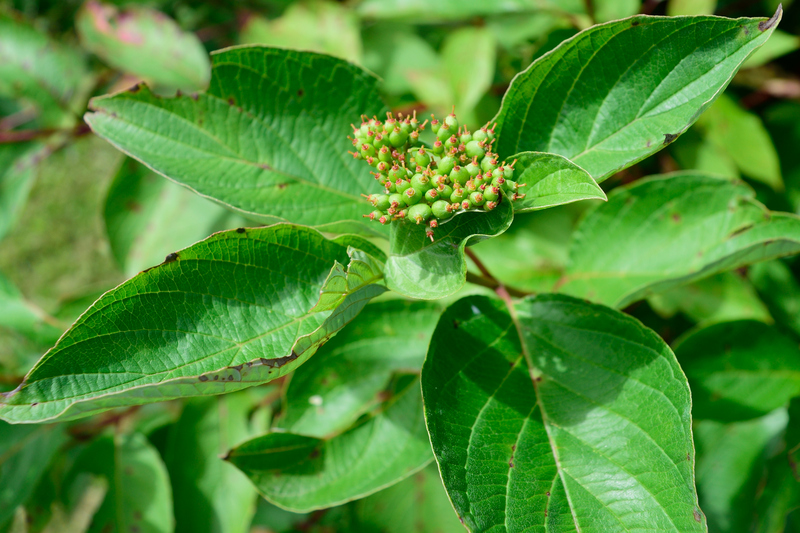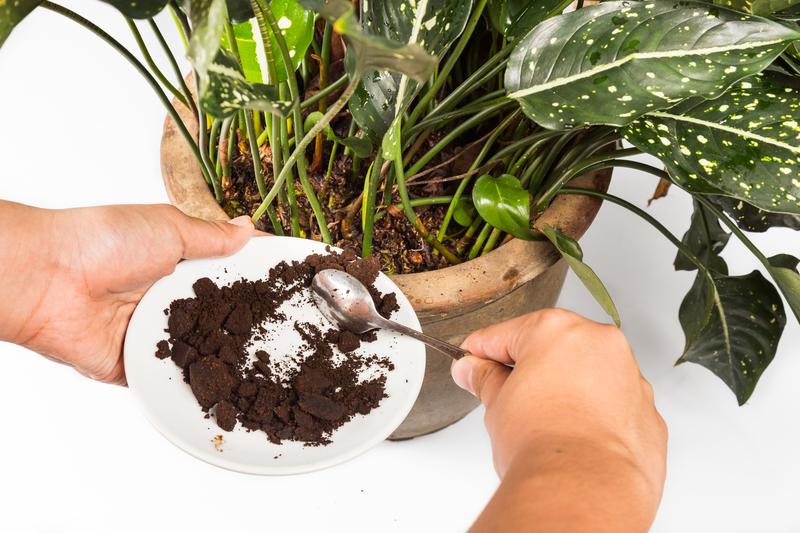Tackling Windy Conditions with Confidence in Your Garden
Posted on 22/06/2025
Tackling Windy Conditions with Confidence in Your Garden
Wind is both a friend and foe in the gardening world. While gentle breezes can help pollinate flowers and strengthen plant stems, strong wind gusts have the potential to wreak havoc on your beloved plants and carefully designed outdoor space. If you find yourself battling blustery weather, don't despair. With the right strategies, tools, and plant choices, you can confidently tackle windy conditions in your garden and watch it flourish no matter the forecast.
Understanding the Impact of Wind on Your Garden
Before diving into solutions, it's crucial to understand how wind affects your garden ecosystem. Windy gardens face a unique set of challenges, but also present some surprising benefits.
Negative Effects of Wind
- Physical Damage: High winds can break stems, uproot young plants, and strip leaves or flowers.
- Increased Water Loss: Wind accelerates evaporation, leading to dry soil and stressed plants.
- Poor Pollination: Excessive wind may disrupt pollinator activity or blow pollen away, reducing yields.
- Temperature Fluctuations: Wind can lower perceived temperatures, causing cold stress, especially to tender plants.
Positive Effects of Wind
- Deters Pests and Fungi: Breezes dry out foliage, discouraging fungal diseases.
- Stronger, Healthier Plants: Moderate wind encourages sturdy stems and root systems.
- Improved Air Circulation: Fewer stagnant areas mean healthier plants overall.
Therefore, tackling strong winds in the garden is about minimizing damage while maximizing the benefits. Let's explore comprehensive, practical ways to handle, manage, and garden successfully in windy conditions.

Designing Your Garden to Withstand Wind
Good garden design is your first defense against wind damage. Whether you are planning a new garden or looking to improve an existing one, these tips can help buffer your plants from the worst of the weather.
1. Assess Your Site
- Observe wind patterns: Spend time in your garden at different times of day and seasons to map out the prevailing wind direction, strength, and most exposed areas.
- Note microclimates: Structures, slopes, and fences may create sheltered or wind-tunneled spots. Recognizing these helps you choose suitable solutions.
2. Install Windbreaks
Windbreaks are among the most effective tools for tackling windy gardens with confidence. These act as shields, reducing the force of the wind and creating sheltered zones where plants can thrive.
- Natural Windbreaks: Plant rows of trees or dense shrubs perpendicular to the prevailing wind. Evergreens, such as holly, laurel, or conifer, are ideal year-round barriers. Deciduous species like willow, hawthorn, or hornbeam also work well.
- Artificial Windbreaks: Erect fences, latticework, or screens made from materials such as wood, bamboo, or even woven willow. These provide instant protection while natural windbreaks grow.
- Living Hedges: Hedges serve as dual-purpose attractions, offering shelter for wildlife as well as blocking wind.
*Tip:* A windbreak should be about 1.5 to 2 times as tall as the area you want to protect. Allowing some air through (about 50-60% permeability) is more effective than a solid barrier, which can create damaging eddies or turbulence on the leeward side.
3. Layered Planting Schemes
Layering your plants--tallest at the back, medium in the middle, and shortest up front--helps cushion the wind's effects. Start with taller, sturdier plants or wind-tolerant shrubs and trees along the windward edge of your plot. Integrate medium height perennials and finally ground-covering plants as a final buffer.
4. Strategic Placement of Structures
- Position greenhouses, sheds, and other garden buildings to help shield your most wind-sensitive areas.
- Use garden screens, trellises with climbers, or even rows of raised beds to break up wind flow and create microclimates for specific crops or favorite plants.
Choosing And Caring for Wind-Resilient Plants
Some plants are naturally equipped to handle windy environments better than others. Choosing the right species and providing them with proper care will set you up for gardening success in windy situations.
Wind-Tolerant Trees and Shrubs
- Sea Buckthorn (*Hippophae rhamnoides*)
- Pine (*Pinus spp.*)
- Hawthorn (*Crataegus monogyna*)
- Escallonia
- Tamarisk (*Tamarix spp.*)
- Olearia ("Daisy Bush")
- Elder (*Sambucus nigra*)
- Mountain Ash (*Sorbus aucuparia*)
Hardy Perennials and Grasses
- Lavender (*Lavandula spp.*)
- Sea Pink (*Armeria maritima*)
- Russian Sage (*Perovskia atriplicifolia*)
- Stipa (*Feather Grass*)
- Sedums and hardy succulents
Wind-Resistant Annuals and Flowers
- California Poppy (*Eschscholzia californica*)
- Nasturtium (*Tropaeolum majus*)
- Cosmos
- Marigolds (*Tagetes spp.*)
- Sweet Alyssum (*Lobularia maritima*)
When planting in windy spots, always give your new additions a little extra attention, especially as they establish. Staking, mulching, and careful watering are essential to their survival and vigour in open, exposed gardens.
How to Support Vulnerable Plants
- Stake young trees: Use flexible ties so the trunk can move with the wind, which strengthens roots and stems over time.
- Use plant supports: Place canes, cages, or frames for tall perennials and delicate flowers.
- Protect seedlings: Cloches, row covers, or mini tunnels can shield young plants as they get established.
Soil and Water Management in Windy Gardens
Windy weather dries out soil quickly, making soil structure and moisture retention key priorities for your garden.
Improving Soil Structure
- Incorporate organic matter: Add compost, leaf mold, or well-rotted manure. This not only retains water but binds loose soils prone to wind erosion.
- Use mulch liberally: Bark mulch, straw, or wood chips suppress weeds and slow evaporation. Replenish regularly where winds are strongest.
- Grow groundcovers: Low-growing plants form a living mulch, raising humidity at soil level and reducing moisture loss.
Efficient Watering Techniques
- Water deeply but infrequently: Encourage deep roots, making plants more drought and wind resilient.
- Water early or late: Wind speeds and evaporation rates are lowest at sunrise and sunset.
- Consider drip irrigation: Minimize waste and deliver moisture directly to roots, even on windy days.
Temporary and Emergency Wind Protection
Sometimes, you'll face storms or unusual wind events that need extra precautions. Here's what you can do when the forecast calls for high winds:
- Use garden fleece: Wrap delicate plants or vegetables to reduce windburn and cold. Secure the fabric well at ground level.
- Move containers: Relocate potted plants to sheltered spots, such as against walls or fences.
- Lay down trellises and supports: Prevent wind damage by temporarily lowering tall structures if a severe storm is imminent.
- Prune judiciously: Remove dead or overlong branches from trees and shrubs to reduce the chance of breakage.
Creative Solutions and Windy Garden Ideas
Far from being a limitation, a windy garden can spur creativity! Use wind to your advantage with the following design ideas:
- Wind chimes & kinetic sculptures: Let breezes create music and movement for a sensory-rich garden experience.
- Plant ornamental grasses: Their graceful swaying adds motion and texture, celebrating the wind instead of fighting it.
- Native wildflowers: Adapted to local climates, they thrive where others struggle.
- Drought-tolerant and coastal plants: Often wind-hardy, these species bring a rugged beauty to exposed locations.

Frequently Asked Questions: Tackling Windy Conditions in Your Garden
Can any plant be protected from wind?
While most plants can be shielded to some degree, extremely tender or top-heavy varieties may always struggle in windy spots. Focus on planting wind-tolerant species in exposed locations and reserve the most vulnerable plants for the most sheltered parts of your garden.
How close should windbreaks be to my garden beds?
A windbreak offers the best protection at a distance of 5 to 10 times its height downwind. For example, a hedge 2m tall will create a zone of reduced wind for up to 20m on its leeward side.
Do fences work as wind barriers?
Yes, but not all fences are equal. Solid fences can cause turbulence, while slatted, louvered, or woven designs allow some wind to pass through and are more effective at slowing rather than deflecting wind.
What should I do after a windstorm?
- Check for snapped stems or branches and prune cleanly to avoid further damage.
- Re-firm any uprooted plants and water thoroughly.
- Inspect supports and staking to ensure they're still stable and secure.
- Mulch bare patches of soil to reduce erosion and retain moisture.
Conclusion: Grow with Confidence in Windy Conditions
With thoughtful planning and smart interventions, you can tackle windy conditions in your garden with confidence. Harness the benefits of wind, fortify your outdoor space against the worst of the weather, and enjoy a resilient, beautiful garden no matter how strong the breeze. From sturdy windbreaks and wind-loving plant choices to clever design tweaks, every garden can be transformed into a thriving oasis--even in the windiest setting.
Embrace the challenge, work with the elements, and grow a thriving, wind-resilient garden you'll love.



